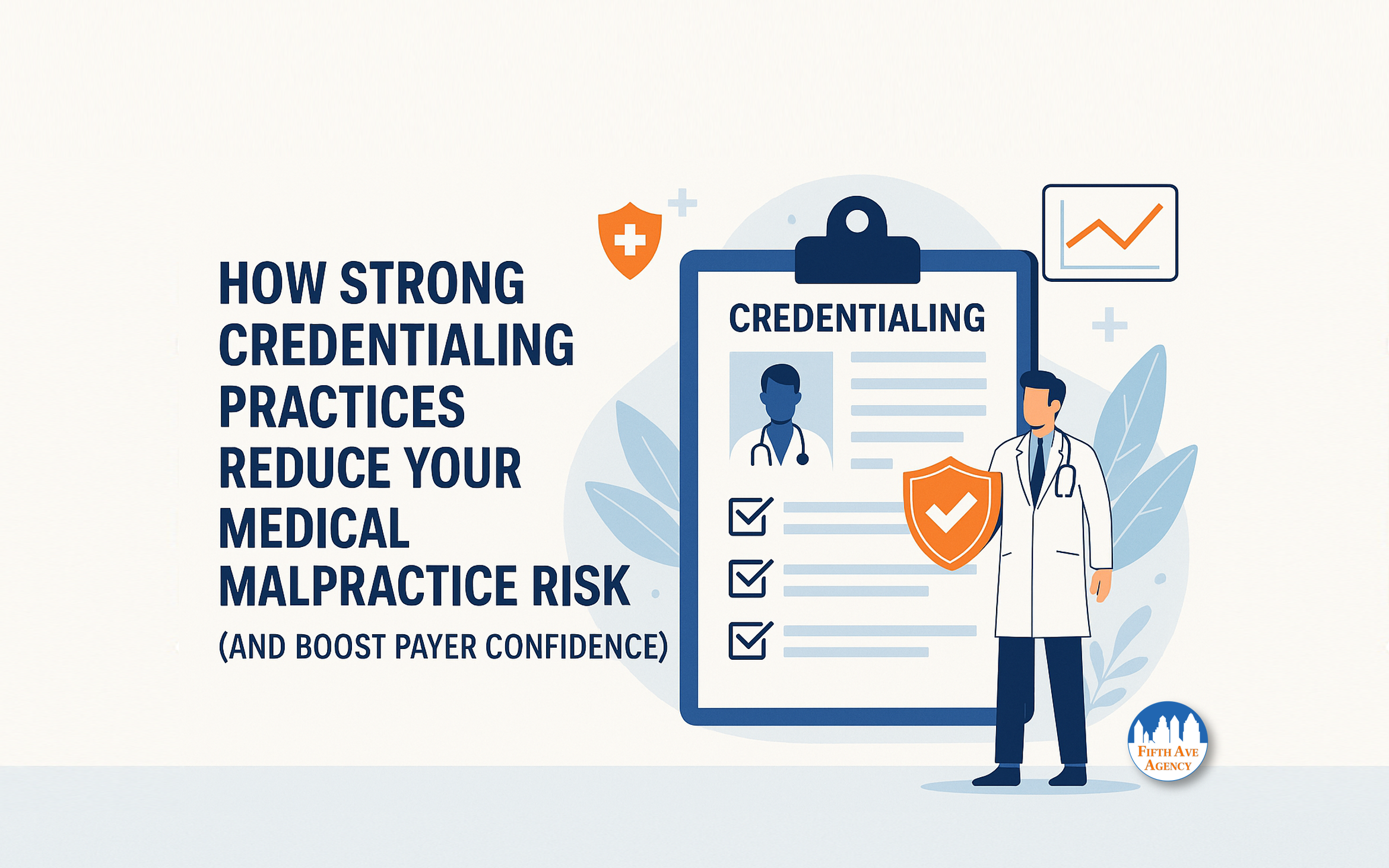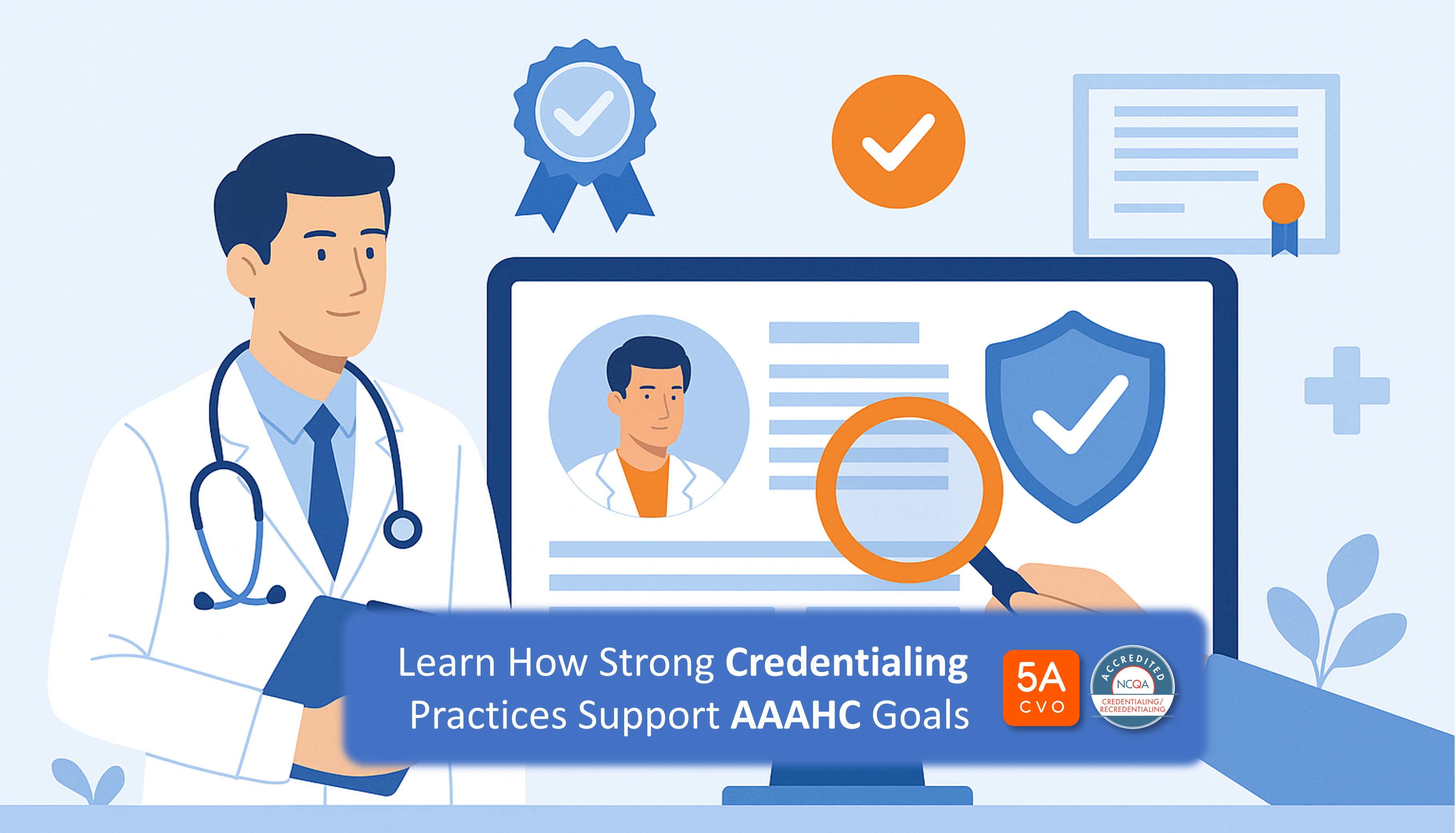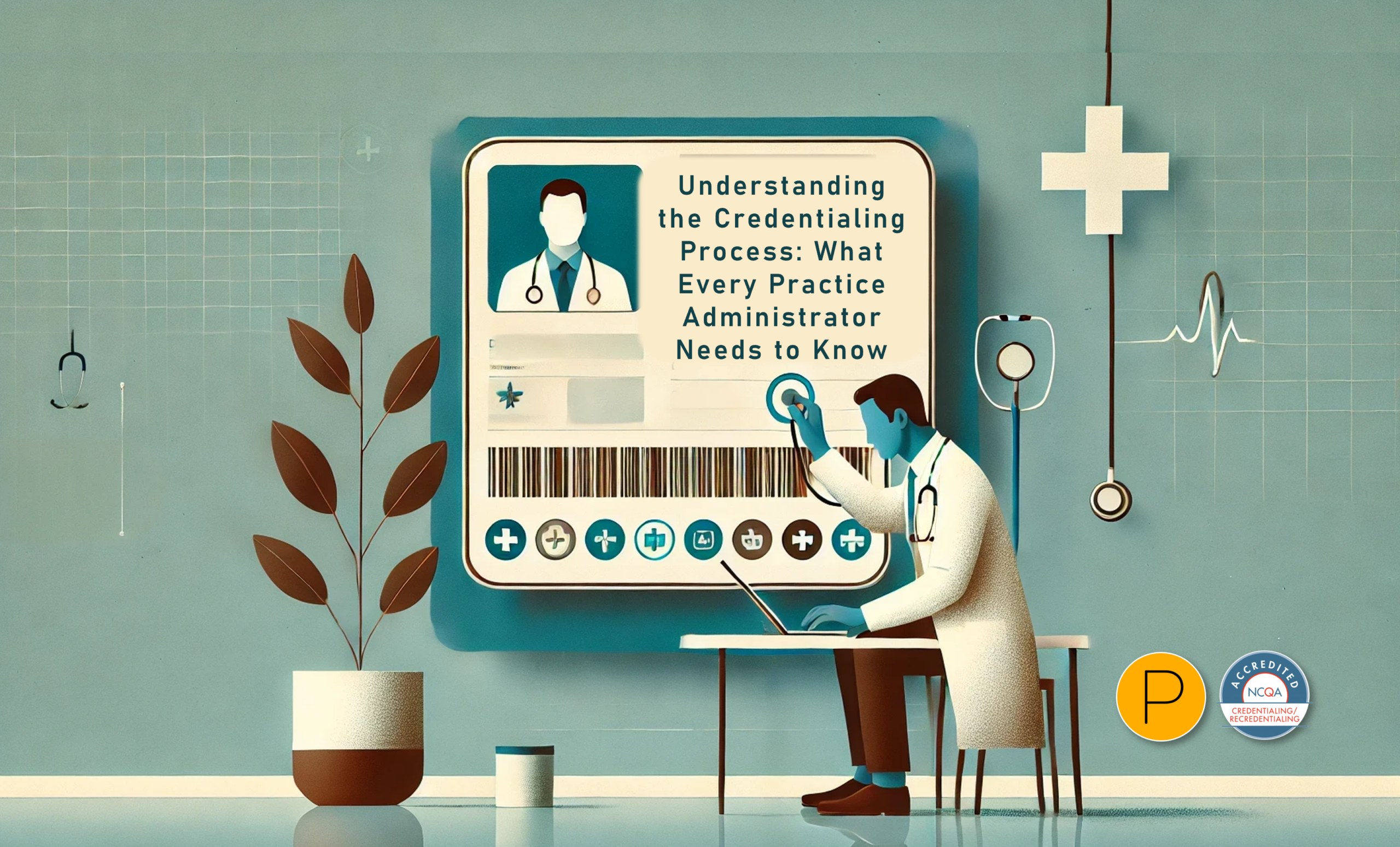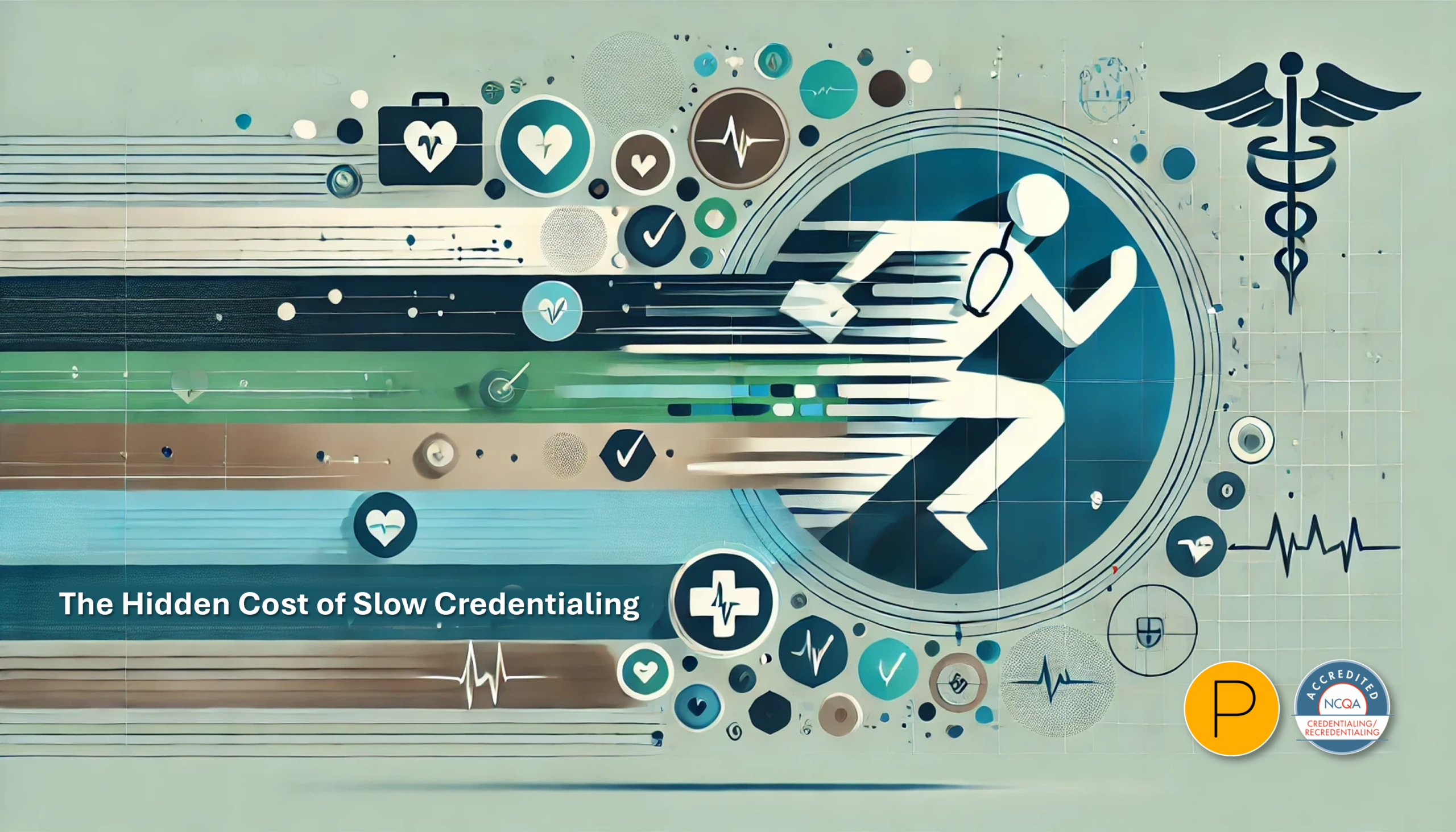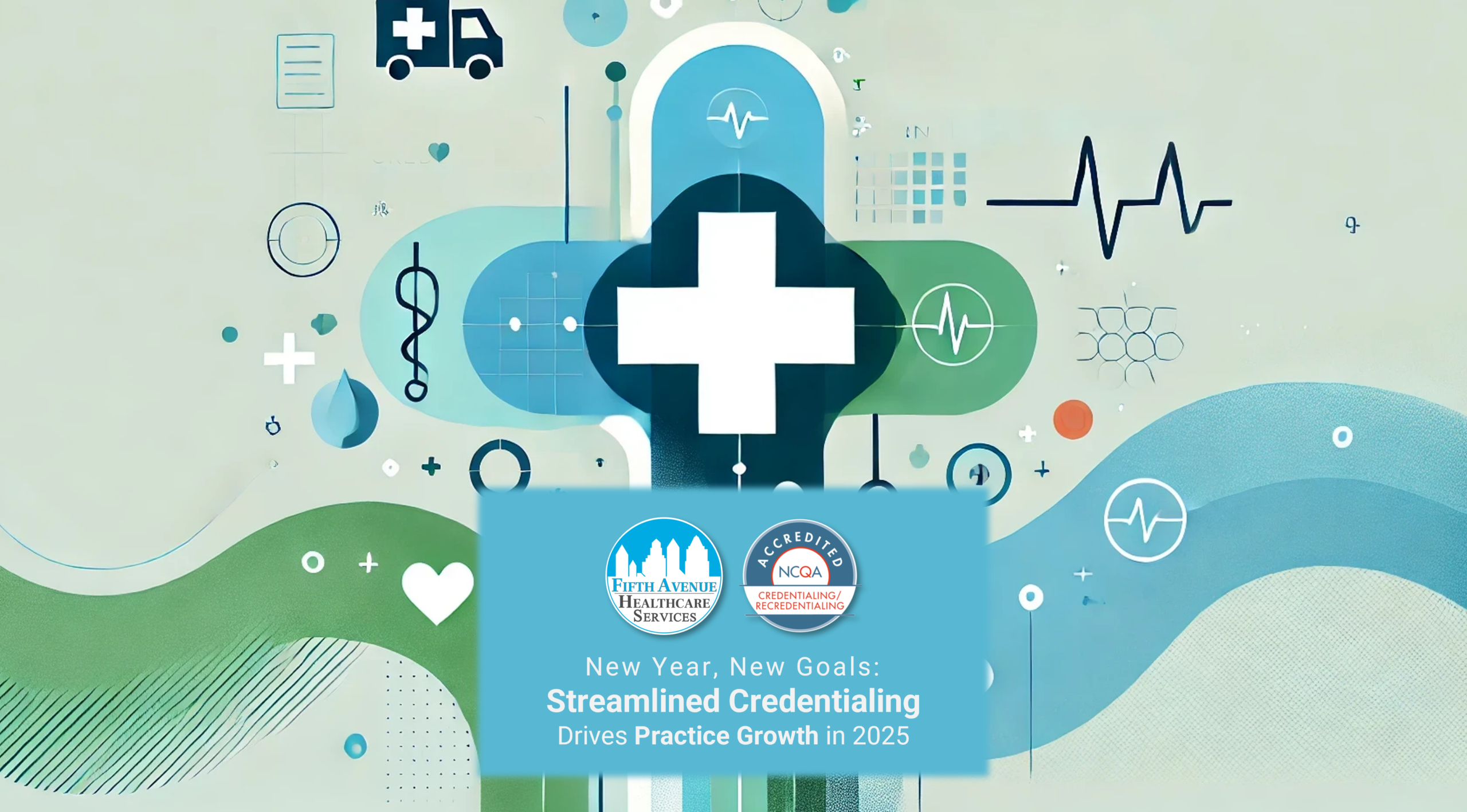Optimizing simplicity and increasing revenue in healthcare is essential because it can improve patient outcomes, increase revenue, allocate resources more effectively, improve staff satisfaction, and increase access to care. Here are three strategies for optimizing simplicity and growing revenue in healthcare which is essential to improving patient outcomes, allocating resources effectively, and increasing access to care.
Strategy #1: Delegated Credentialing
Providers, their practices, and other medical organizations know how difficult it is to sign onto health plans and networks so they can begin billing for their services.
There are three stages to the provider enrollment process:
- Primary Source Verification of a Provider’s Credentials
- Payor Application Process
- Contracting Process
Stage 1: Primary Source Verification
Primary Source Verification (PSV) is necessary for every healthcare provider who seeks to be enrolled in any health plan or network option. Insurance companies do not want unverified providers on their plans, which would present a tremendous risk of financial costs in claims and litigation. Credentialing can identify providers considered unqualified to treat patients, potentially decreasing patient injuries and deaths and claims and lawsuits.
Conventional credentialing typically involves 52+ action steps that must occur before a file is ready for presentation.

52 primary source verification (PSV) or conventional credentialing steps include:
- Sending out, tracking, and receiving the provider application packet.
- Obtaining the provider’s release.
- Getting the privilege forms.
- Reviewing the disclosure’s questions and answers.
- Evaluating the explanations of time gaps and claims history.
- Assessing medical malpractice claims history.
- Acquiring applicable certificate copies of Board, ECFMG, Medical School, Internship, Residency, Fellowship, and two years CME.
- Obtaining copies of government-issued photo ID, Malpractice, DEA, and CDS.
- Getting CPR, ACLS, and PALS certificate copies.
- Acquiring TB, MMR, varicella, and flu vaccination records.
- Attesting any conflict of interest.
- Collecting a provider release and ordering a criminal background check.
- Obtaining an Allied Health Professional’s Supervising Physician’s Statement.
- Verifying Board certification.
- Reviewing and confirming AMA and AOA profiles.
- Authenticating medical school internship, residency, fellowship, and affiliations.
- Confirming state medical licensure.
- Obtaining professional peer references.
- Gathering current medical malpractice claims history.
- Research primary and out-of-state licenses for disciplinary actions.
- Verifying DEA certification.
- Verifying CDS certification (if applicable).
- Obtaining a copy of the provider’s current certificate of insurance.
- Confirming any Medicare and Medicaid sanctions (OIG) and exclusions (SAM).
- Performing an extensive 10-year criminal background check.
- Running a National Practitioner Data Bank query.
Credentialing alone is a lengthy step in the provider enrollment process. Primoris collaborates with its sister company, 5ACVO, to shorten this step from 52 conventional credentialing steps to 6 simple steps.
Stage 2: Payor Enrollment Application
Each health plan, including Medicare, has its application process. Like enrollment policies, applications can vary based on state, health plan, network, and area of practice. Learning how to apply with any payor can be frustrating and time-consuming. Applying to multiple payors per provider can drain resources, time, and energy and increase costs that could be better spent on helping patients or running a provider’s practice.
Primoris can aid providers through this crucial stage by fully administering the application process and applying to 25+ delegated health plans and networks via ONE application. Another 25+ non-delegated health plan and network options allow providers to begin billing and see patients sooner than the traditional application process.
Delegated contracts allow Primoris to use ONE application to enroll a provider much faster than the traditional method of sending an application to each health plan.
Primoris is delegated by most major plans, including:
- Access Health Services
- Aetna
- Beech Street
- CareWorks
- Choctaw Nation
- Coventry Health Care
- Evolutions Healthcare Systems
- First Health
- Fortified Provider Network
- Friday Health Plans
- Galaxy Health Network
- Generations Healthcare Network
- GlobalHealth
- Healthcare Highways
- HealthSmart
- Humana
- Humana Military | Tricare
- Longevity Health Plan
- Medica
- MultiPlan
- Oklahoma Complete Health
- Prime Health Services
- Sedgwick
- United Healthcare
- USA Managed Care Organization
- WellCare
- WellFirst health
- Zelis
Primoris also works well with non-delegated contracts. Their experienced team of specialists has built strong relationships over the years with multiple health plans and networks, developing a depth of experience and expertise with payors that include:
- Assured Benefits Administration
- BlueCross BlueShield of Oklahoma
- CareATC
- Cherokee Nation
- Cigna
- CommunityCare
- Corporate Remedies
- CorVel
- HealthChoice
- Indian Health Service
- Integris Health
- Medicare
- Medicare for Railroad Workers
- State of Oklahoma
- Oklahoma Corrections
- Oklahoma Rehabilitation Services
- OSMA Health
- Community Care Preferred Community Choice PPO
- TRICARE
- TriWest Healthcare Alliance
- US Department of Veterans Affairs – Veterans Health Administration
- WorkNet CommunityCare
Primoris has built relationships with these companies to maximize efficiency in the enrollment process to best assist providers in seeing patients as soon as possible. These arrangements can benefit providers no matter the contract type.
Primoris provides ONE point of contact for delegated and non-delegated enrollment to assist providers further. ONE point of contact for delegated and non-delegated enrollment. Providers and administrators need only maintain ONE email address and ONE phone number. Just contacting the right people can often take time and effort. Attempting to contact multiple people can be a hassle. Primoris strives to keep it as simple as possible.
Stage 3: Contracting
After the primary source verification and plan application stages, the plan sends a contract to the provider to review and sign. Once the provider approves the terms and signs the contract, the plan countersigns the agreement. When contracting is complete, the plan completes the loading process and sets a date for the provider to begin accepting covered patients and billing.
The same general process is repeated for each payor, including Medicare and Medicaid. Having someone with experience aid the provider in the Medicare and Medicaid application process is helpful. Medicare enrollment can be elaborate and lengthy. Simple mistakes can be costly and delay enrollment and billing.
Benefits Of Delegated Credentialing
Outsourcing delegated credentialing (delegated provider enrollment) with a team such as Fifth Avenue Healthcare Services’ sister company, Primoris Credentialing Network, can help providers and their practices attain a swifter turnaround so billing can begin. Medical practices can change how they do business when outsourcing provider enrollment.
Partnering with Primoris can reduce a variety of typical provider headaches.
- Primoris partnership can reduce your workload.
- Primoris partnership can reduce your costs.
- Primoris partnership can reduce delays.
Partnering with Primoris can provide positive results.
- Primoris partnership provides resources.
- Primoris partnership provides you with more control.
- Primoris partnership provides options.
- Primoris partnership provides peace of mind.
For more on the benefits of delegated credentialing and outsourcing your provider enrollment to Primoris utilizing a delegated credentialing strategy, please read our article on the 7 Key Benefits To Outsourcing Credentialing And Provider Enrollment.
Strategy #2: Collaborate With A CVO
A CVO, or credentials verification organization, assists organizations in verifying a provider’s qualifications and experience using primary sources. By assuming responsibility for obtaining and confirming relevant information, a CVO can alleviate the administrative burden on organizations.
As previously mentioned, credentialing involves 52 steps to prepare a file for review and approval by a board or committee. However, the level of scrutiny may vary depending on the provider’s specialty and service location.
Collaborating With A CVO Means Less Work
Healthcare providers must be adequately credentialed before participating in any health plan. Primary source verification is a complex process that confirms a provider’s credentials, such as education, work history, and licenses, to ensure they are qualified to practice medicine. Outsourcing this process to a team of experts can reduce the 52 conventional credentialing steps down to just 6 simple ones, making it easier for medical offices to manage their workload. This can save time and allow healthcare providers to focus on more critical work.
Additionally, outsourcing provider enrollment can help with reappointment time, as another team manages the process, saving the organization time and effort. Working with a CVO can accelerate your credentialing process by 5 to 7 days. Can you imagine how many patients one provider can see in that time?
Collaborating With A CVO Means Fewer Mistakes
Errors in credentialing can have significant financial consequences for medical practices and organizations. The potential risks are expensive even if the cost is not immediately apparent. An unqualified healthcare provider can harm patients, leading to costly medical malpractice claims. The average payout for medical malpractice is around $101,000. Just one mistake in credentialing can expose a practice to this kind of financial burden or even more.
To avoid these risks, a Credential Verification Organization (CVO) can be a valuable resource. CVOs employ experienced professionals who specialize in credentialing and can ensure that best practices are followed. By relying on a CVO, practices can reduce the chances of inexperienced or busy staff members making errors that could lead to malpractice claims.
CVOs focus on primary source verification, eliminating distractions and enabling them to complete their jobs thoroughly and accurately. With their expertise and dedication, CVOs can help practices avoid costly mistakes and protect their bottom line.
Collaborating With A CVO Means More Control
Outsourcing credentialing can provide healthcare providers with access to advanced tools to take greater control of their credentialing process. A robust credentialing web portal can empower providers to manage and monitor the enrollment process more efficiently. Portal users can track information related to health plan enrollment, including current statuses, reappointment filings, expiring documents, and more.
With greater control over the process, healthcare providers and practices can feel more confident knowing that they can quickly investigate and resolve any issues that arise before they escalate. Providers can trust that their information is secure and easily accessible, rather than being stored in file cabinets that anyone can access.
Collaborating With A CVO Provides Greater Peace of Mind
A CVO can offer peace of mind by relieving the demanding job from the shoulders of beleaguered office staff. By delegating credentialing duties to skilled professionals, you can eliminate the stress of managing every minute detail and free up your practice staff to focus on what they are best suited and trained for.
Efficient credentialing can also help to reduce financial fears, particularly in practices facing cutbacks or worse. With the assurance that their providers will be promptly credentialed with plans or networks, providers can begin billing 5-7 days faster, according to NAMSS, by working with a CVO.
Strategy #3: Reduce Expenses And Cut Costs
Healthcare organizations operate in an environment of constant change. New regulations and technological advancements can significantly impact their bottom line. Organizations can better adapt to these changes and remain financially sustainable by cutting, reducing, and streamlining expenses.
Lower Expenses With Expedited Billing
Outsourcing credentialing and provider enrollment can reduce providers’ expenses and increase billing, driving more revenue. NAMSS and Merritt Hawkins conducted research indicating that a quicker CVO credentialing process can lead to potential new billing opportunities of approximately $47,000 per provider.
Lower Expenses By Reducing Overhead Costs
Partnering with a credentialing IPA like Primoris can help you avoid various costs such as employee turnover costs, training costs, payroll taxes, workers’ compensation, and increasing employee benefit costs. Furthermore, the outsourced provider’s enrollment team does not require paid time off, ensuring that the credentialing process is consistently handled without any interruption.
Eliminating an in-office credentialing specialist could save a practice over $70,000 annually through salary, taxes, benefits, and health insurance cost reductions, reducing the expenses that cut into revenue. Similarly, the cost of credentialing software, which can be as high as $400 a month, may not seem significant initially, but savings increase over time. Paperwork and storage needs can also sharply reduce revenue margins.
Concerning provider enrollment, these costs become a single line-item cost on the budget. Fixed credentialing costs eliminate hidden fees and enable practices to streamline expenses. By avoiding ongoing cost changes yearly, practices can better budget and prepare for the future.
5 Bonus Tips to Grow A Healthy Medical Practice
1. Bonus Discussion: Hire Qualified Physicians
To minimize the risk of treatment negligence, medical practices should hire qualified physicians certified to treat patients and fit well with the existing team culture. While some factors are beyond their control, these steps can help practices limit their exposure to malpractice claims. Credentialing new physician hires through CVOs can help ensure that only the most skilled and well-trained medical providers care for patients.
2. Bonus Discussion: Hire Qualified Office Staff
A medical practice’s success depends on more than just the doctors they employ. A unified healthcare team, which includes front-line and behind-the-scenes staff, can make or break a practice’s fortunes. Patients are more likely to return to a particular practice when greeted by a friendly face at check-in. Knowledgeable staff can help keep a practice profitable by ensuring correct billing and insurance processes.
An experienced credentialing specialist can properly vet a physician. Poorly performing staff can harm a practice. Rude greeters, incorrect billing, and hiring physicians with a malpractice history can all hinder growth.
3. Bonus Discussion: Keep Training
A medical practice can thrive by maintaining standards of care, safety policies, and efficient office administration. Knowledge is power, and well-informed staff can provide superior service, earning the appreciation and recommendations of patients.
Consistent training can significantly reduce errors in the office and examination room, reducing the risk of malpractice lawsuits and aiding the practice’s growth. In today’s world of emerging technologies and telehealth, proficiency in these new methods can broaden the client base and open up new opportunities for the practice.
4. Bonus Discussion: Patient Surveys
To improve their performance and identify areas for improvement, medical practices can use patient surveys as a valuable tool. Surveys can be conducted through various channels, such as online, in-person, or over the phone. However, keeping the questionnaires short and straightforward is essential to avoid patient inconvenience.
Providers can also refer to the CMS HCAHPS guidelines for assistance in creating a quality survey. Improving patient surveys can lead to higher patient retention rates, which is crucial in growing a medical practice.
5. Bonus Discussion: Have Sufficient Medical Malpractice Insurance
Medical malpractice lawsuits are common for physicians, with 51% of all doctors in 2021 being named in a lawsuit. These lawsuits can significantly drain a practice’s resources and hinder its growth.
Even physicians in low-risk specialties have a 75% chance of facing a claim during their career, while the likelihood jumps to 99% for those in high-risk specialties. While healthcare providers can take steps to prevent malpractice, litigation is sometimes unavoidable. This is why it is essential to have malpractice insurance to protect personal assets from potential damages.
Activate Your Strategy Today
Striving for simplicity can benefit healthcare organizations, their staff, and their patients, making it an essential consideration for organizations seeking to improve their operations.
Following any or all of this article’s strategies can help you and your organization:
- Improve patient outcomes, leading to higher patient satisfaction and lower healthcare costs.
- Increase revenue and profitability for healthcare organizations.
- Better allocate resources and avoid waste.
- Enhance staff satisfaction and reduce turnover.
- Expand access to care.
More information about Primoris Credentialing Network
Primoris Credentialing Network is a NCQA Credentialing Accredited specializing in credentialing and provider enrollment with 54+ health plan and network provider enrollment options. Primoris is a family member of Fifth Avenue Healthcare Services. Sister companies include 5ACVO (credentialing and primary source verification specialists) and Fifth Avenue Agency (MPLI and medical malpractice specialists).
This article was initially published by Primoris Credentialing Network here. For more information on Primoris Credentialing Network, please visit PrimorisCredentialingNetwork.com or Contact Us.

